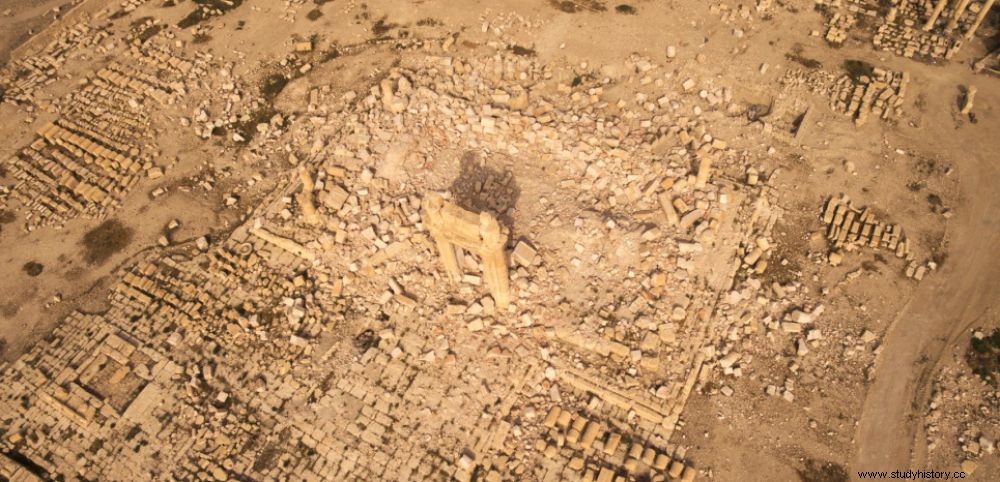 Palmyra, aerial view of the destroyed Temple of Bel, taken from a drone.
Palmyra, aerial view of the destroyed Temple of Bel, taken from a drone. HERITAGE. Back from Syria, the French start-up Iconem has just completed the complete 3D digitization of the Palmyra site and its main monuments after the Daesh group was driven out on March 27, 2016. By combining the use of drones photogrammetry techniques, Iconem's archaeologists, pioneers of these methods, wanted to keep a virtual archive of the site as it was abandoned after the fighting and the voluntary destruction carried out by Islamist terrorists. An exceptional work that is part of the Syrian Heritage project, created in partnership with the DGAM (General Directorate of Antiquities and Syrian Museums) aimed at creating the largest 3D database for the safeguarding of endangered archaeological sites in the Syrian heritage. Yves Ubelmann, the founder of Iconem, explains to Sciences et Avenir the conditions of this extraordinary mission:
You have just returned from Palmyra, which you know well having worked there for several years as an architect. Under what conditions did you find yourself again on this UNESCO World Heritage Site?
At the end of March, we were alerted by our Syrian archaeologist colleagues claiming that Daesh was about to leave Palmyra. We immediately went to Syria to be the first on site and thus carry out 3D surveys for the complete modeling of the site. We found in Damascus a delegation from the DGAM (General Directorate of Antiquities and Museums), made up of the director in charge of Syrian museums, Ahmad Deeb, the former curator of the Palmyra museum, Khalil Al-Hariri, engineers , architects and archaeologists, in particular Houmam Saad, post-doctoral archaeologist at the Labex of the Ecole Normale Supérieure (ENS), in Paris. The Damascus-Palmyra road being impassable, because too dangerous, we had to go through Homs, which we made our base camp. Every day, by this detour, we drove 3 hours to reach Palmyra.
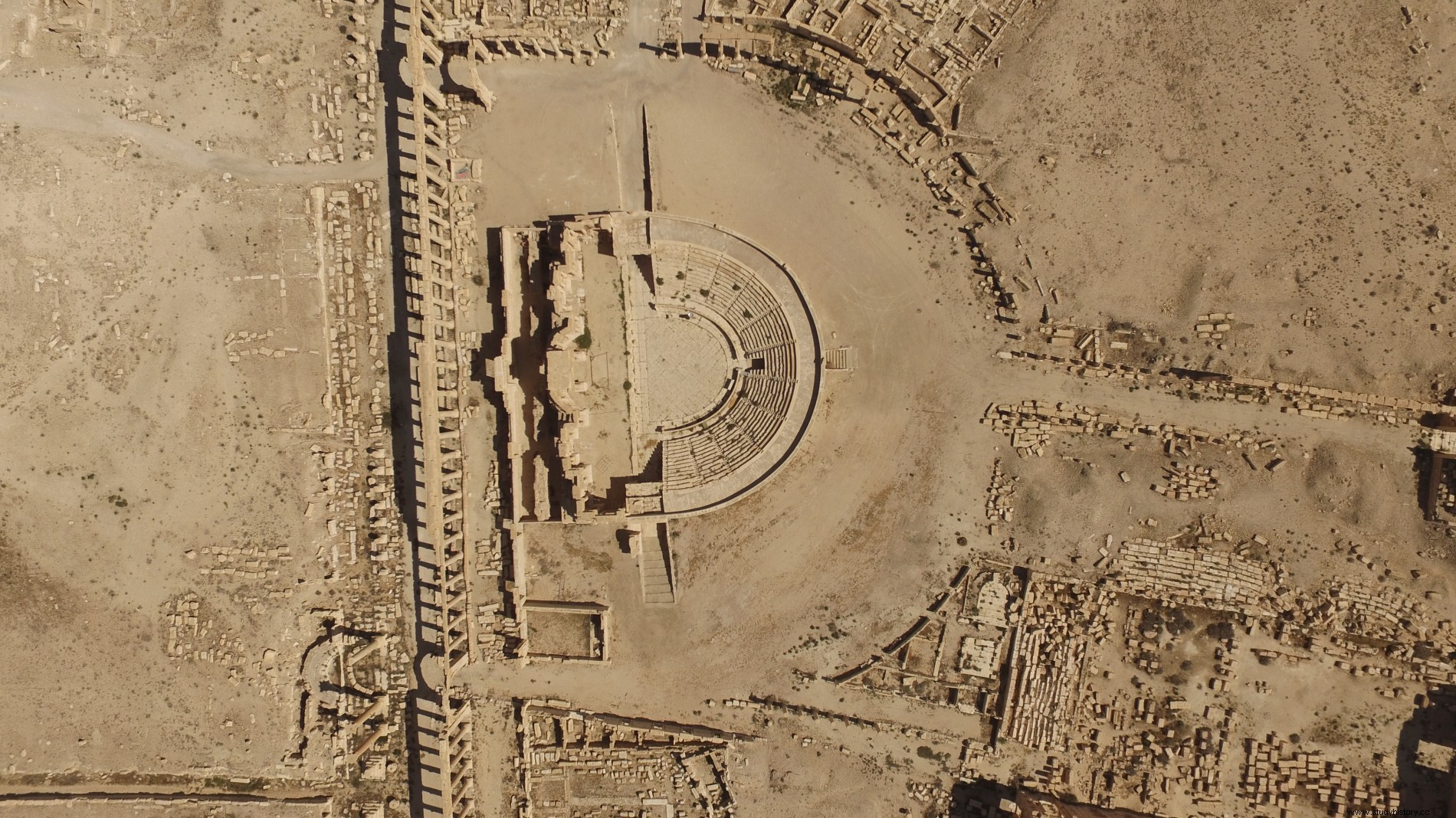
The great Roman colonnade and theater in Palmyra (1st-2nd century AD), where around 20 people were murdered by Daesh in 2015.
What was your first reaction when you arrived in Palmyra?
I was again dazzled to see, on the horizon, the extraordinary site as I had always known it! Very quickly, however, we found ourselves on totally broken ground, as the Russian deminers had to dig to extract the mines intentionally left by Daesh to cause maximum damage. It was very impressive.
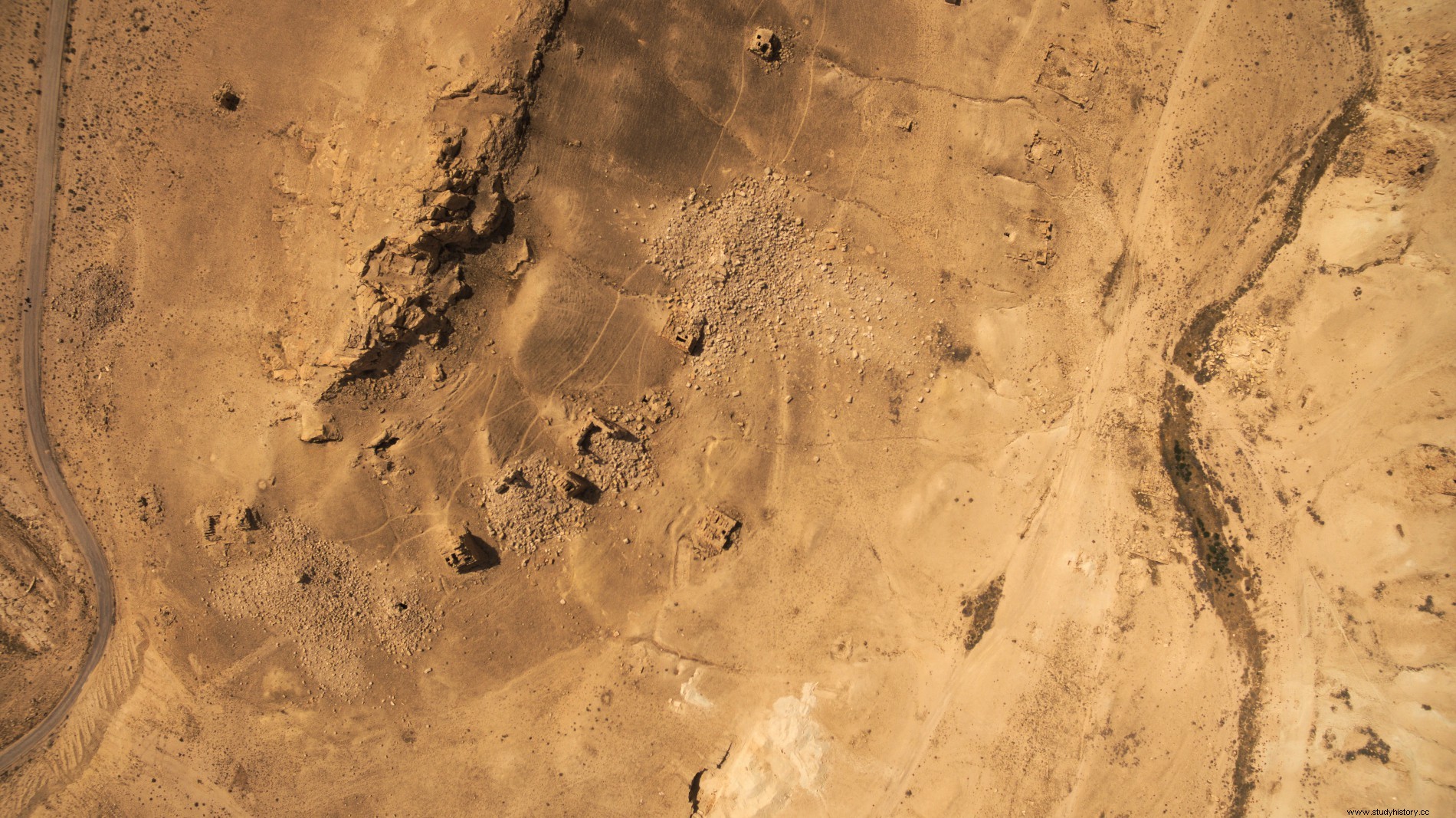
In the Valley of the Tombs of Palmyra, a dozen Tower-tombs completely pulverized. © Iconem/Dgam
What archaeological destruction have you seen?
The temples of Bel, Baalshamin, the triumphal arch, as well as several tower-tombs were completely destroyed. We were able to make 3D surveys of what remains of it using a drone we had. Some blocks have fallen whole and can be reassembled. Others, pulverized and reduced to the state of gravel, will unfortunately never be able to be. At the end of the site, by going to the Valley of the Tombs, -where half of these tombs were destroyed-, then in the very famous one of the Three Brothers that Houmam Saad had particularly studied in the past, we had the surprise to discover that Daesh had used this hypogeum (underground tomb) as a shelter. Backpacks, clothes, shoes, mattresses, everything was left behind! In their flight, they did not have time to take their belongings.
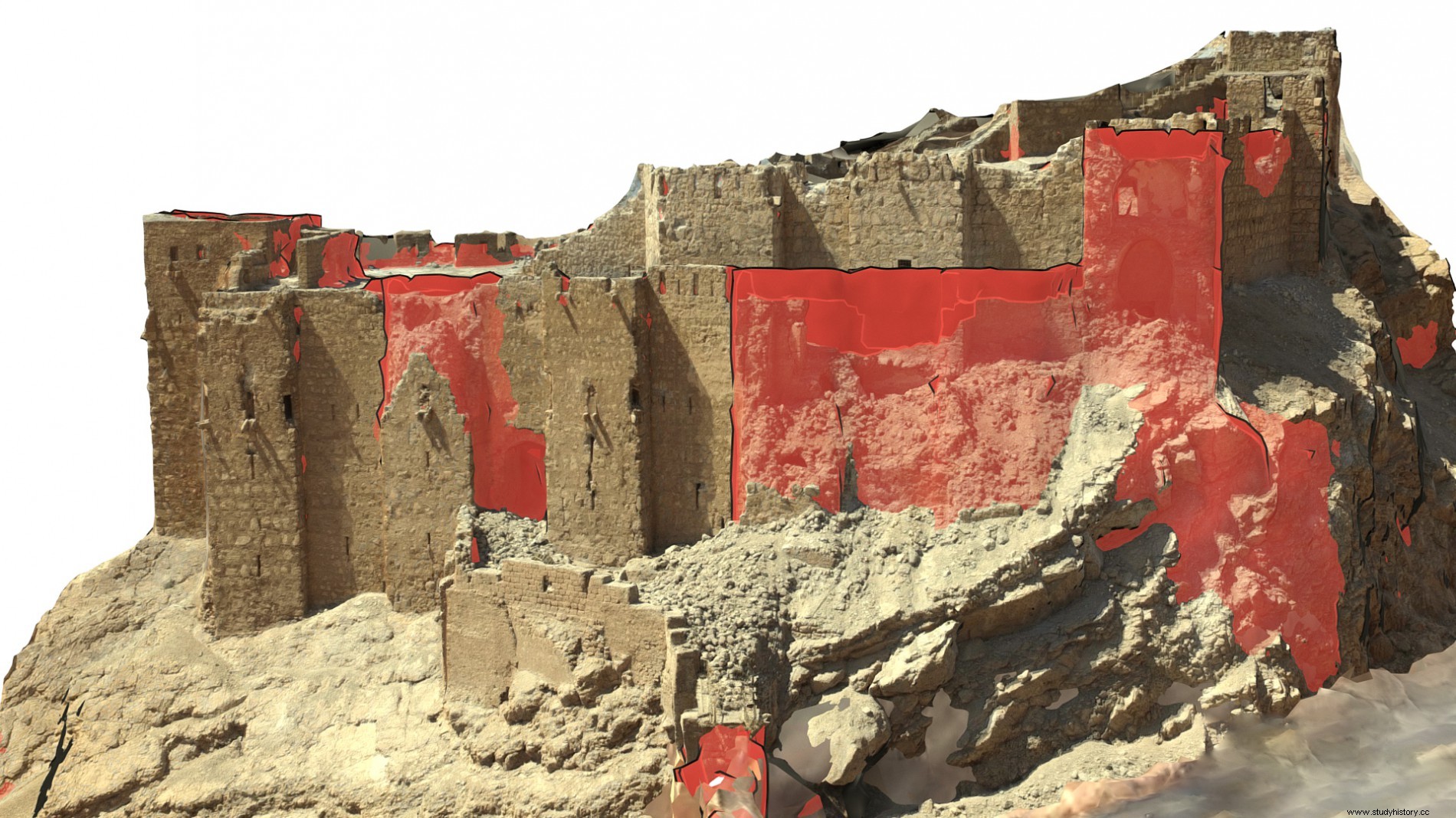 3D photogrammetric survey of the Citadel of Palmyra, classified on the UNESCO World Heritage List. In red, the precisely destroyed areas. © Iconem/Dgam
3D photogrammetric survey of the Citadel of Palmyra, classified on the UNESCO World Heritage List. In red, the precisely destroyed areas. © Iconem/Dgam
What do you think of some of the controversies that have started to swirl around a potential "rebuild" of the site?
We do not wish to enter into these debates. However, from the outset, it seems to me, there were problems of understanding between words as different as "reconstruction", "restoration", or "reassembly". Problems translating these very distinct words from Arabic to English or French may have led to misinterpretations. Be that as it may, the Iconem project has no other goal than to constitute a very precise documentary corpus of the Palmyra site, to make it available to specialists wherever they are in the world, in a way to feed the debate on the basis of scientific data. We have already posted the Citadel and its destruction, the Qalat Ibn Maan , a fortress built in the 16th century, just above Palmyra, also listed on the World Heritage List. Daesh was dislodged from it on March 25, 2016. The entire Palmyra site in 3D will be available very soon.
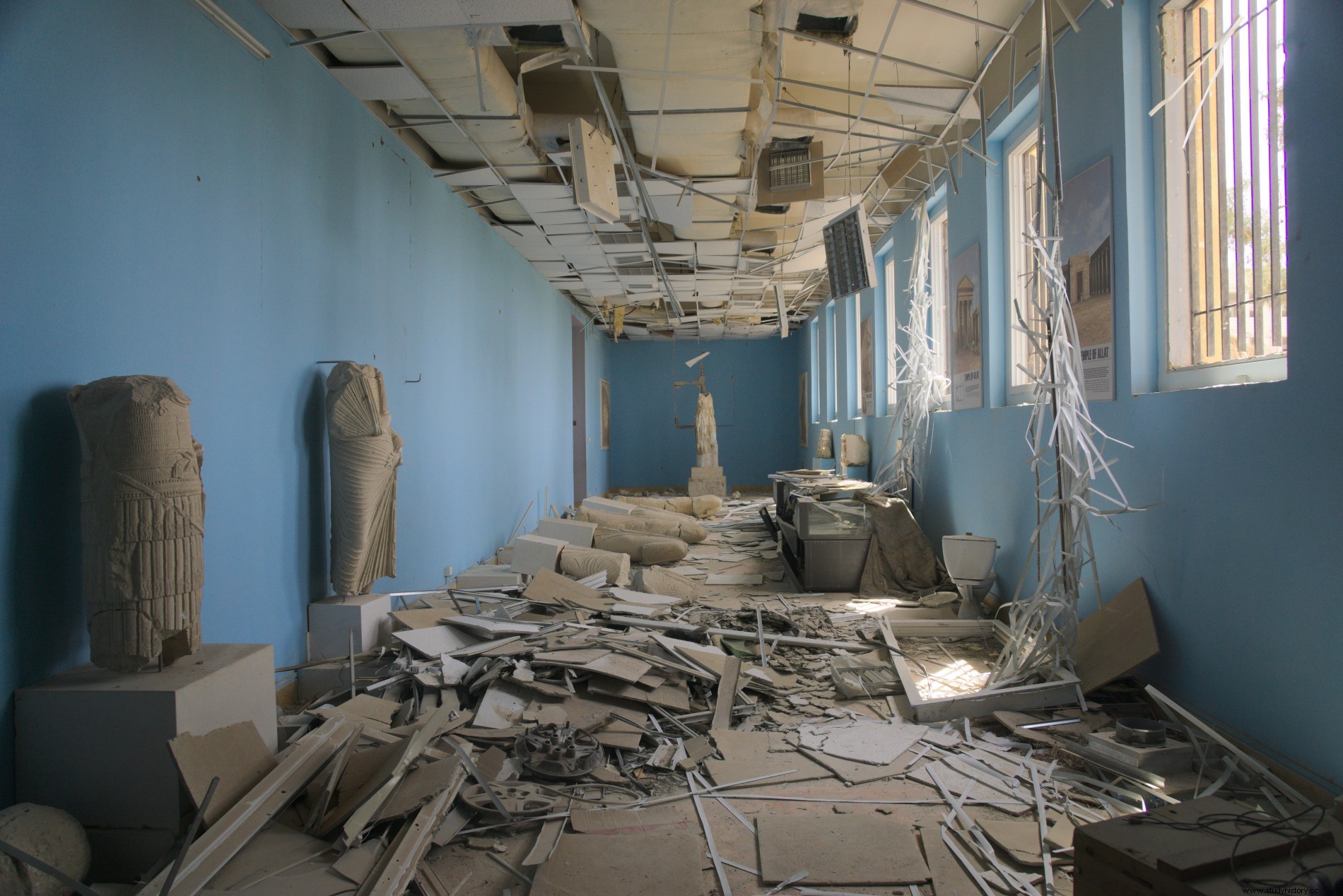
A room in the Palmyra Museum, as it was left by Daesh on March 27, 2016. ©Iconem/DGAM
What about the museum?
When we arrived, we found a real no man's land. Not a living thing around! The interior had been completely ransacked, which shocked me for having worked in one of these rooms for several years. We immediately began our photogrammetric surveys. The destruction caused by Daesh must indeed be precisely documented. We thus have thousands of 3D images of all the rooms and the damage that has been perpetrated there. It's a scientific inventory, like the police would at a crime scene! Hence the importance of being there first, before any manipulation. Because today, as I speak to you, the appearance of the museum has already completely changed. The restorers have started to clean everything. In Paris, our algorithms are already processing all these images. Recall that, by chance, the vast majority of the statues on display had been saved by Syrian archaeologists just before the arrival of Daesh.
You also visited other Syrian heritage sites to complete the 3D surveys carried out as part of the Syrian Heritage project. Which ones?
Syrian Heritage is the largest 3D archaeological database dedicated to Syrian heritage threatened by war. To continue to preserve all traces of it, we have therefore continued our work with the complete survey of Saladin's fortress ( Qal`at Salah El-Din), near Latakia, a site on the World Heritage List, as well as the medieval tower of Safita, a Frankish construction dating from the Crusades. Located near Homs, it belonged to the Order of the Hospital. Then, we returned to Ugarit (Ras-Shamra), before going to an extraordinary Roman temple with blocks as voluminous as that of Baalbek (Lebanon). Our field mission ended with the survey of Amrit, a Phoenician site located near the city of Tartous.
